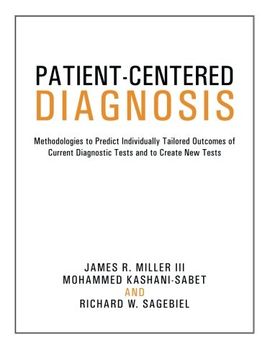Share
Patient-Centered Diagnosis: Methodologies to Predict Individually Tailored Outcomes of Current Diagnostic Tests and to Create new Tests
Kashani-Sabet And Sagebiel Miller (Author)
·
Iuniverse
· Paperback
Patient-Centered Diagnosis: Methodologies to Predict Individually Tailored Outcomes of Current Diagnostic Tests and to Create new Tests - Kashani-Sabet And Sagebiel Miller
Choose the list to add your product or create one New List
✓ Product added successfully to the Wishlist.
Go to My Wishlists
Origin: U.S.A.
(Import costs included in the price)
It will be shipped from our warehouse between
Wednesday, June 05 and
Friday, June 21.
You will receive it anywhere in United Kingdom between 1 and 3 business days after shipment.
Synopsis "Patient-Centered Diagnosis: Methodologies to Predict Individually Tailored Outcomes of Current Diagnostic Tests and to Create new Tests"
Patient-centered diagnosis and prognosis focus on individual patients. Both rely on a methodology that generates individually tailored probabilistic predictions of a specified medical outcome that a particular patient may experience. Predictions are based on observable diagnostic and prognostic factors. Because these predictions are both particular-outcome-specific and individual-patient-specific, achieving predictive accuracy poses a formidable challenge. Nevertheless, the patient-centered methodology (PCM) appears to produce more accurate individually tailored patient predictions than those typically achieved under current medical practice. PCM achieves its greater predictive accuracy by exploiting several analytical devices. 1. It redesigns and retools each successive stage of the analytical procedure to predict the particular future outcome that the targeted patient could experience. 2. It identifies the existence, the direction, the shape, and the magnitude of each diagnostic and prognostic factor's relationship to the particular outcome as that relationship pertains, specifically, to patients similar to the targeted patient. 3. It relies on detected interrelationships among separate diagnostic and prognostic factors and between both and the specified outcome to "fill in" missing observations so that an individually tailored probabilistic prediction is possible, even with incomplete patient data. From a physician's perspective, greater accuracy can facilitate better treatment selection choices and other improvements in patient management. From a patient's perspective, greater accuracy can facilitate more appropriate future planning and lifestyle choices. These benefits are illustrated by applying PCM to two diagnostic tests currently offered to cancer patients (sentinel lymph node biopsies and FDG-PET/CT scans) and to a novel diagnostic procedure (DSSA) recently developed to distinguish malignant melanomas from benign nevi (ordinary moles). PCM appears capable of reducing the cost of these current diagnostic tests by at least 40 percent and of increasing their triage efficiency by at least 66 percent. PCM, when incorporated within DSSA, also appears capable of achieving a sensitivity of 97 percent, a specificity of 98 percent, and a correct discrimination rate of 97 percent in distinguishing malignant melanomas from benign nevi.
- 0% (0)
- 0% (0)
- 0% (0)
- 0% (0)
- 0% (0)
All books in our catalog are Original.
The book is written in English.
The binding of this edition is Paperback.
✓ Producto agregado correctamente al carro, Ir a Pagar.

